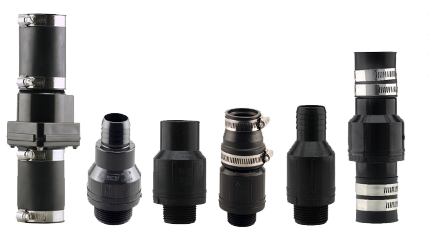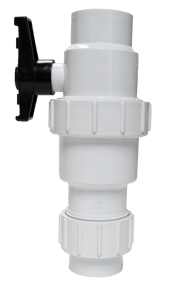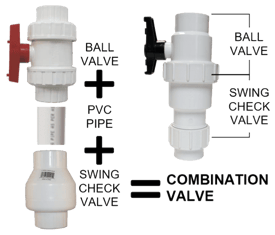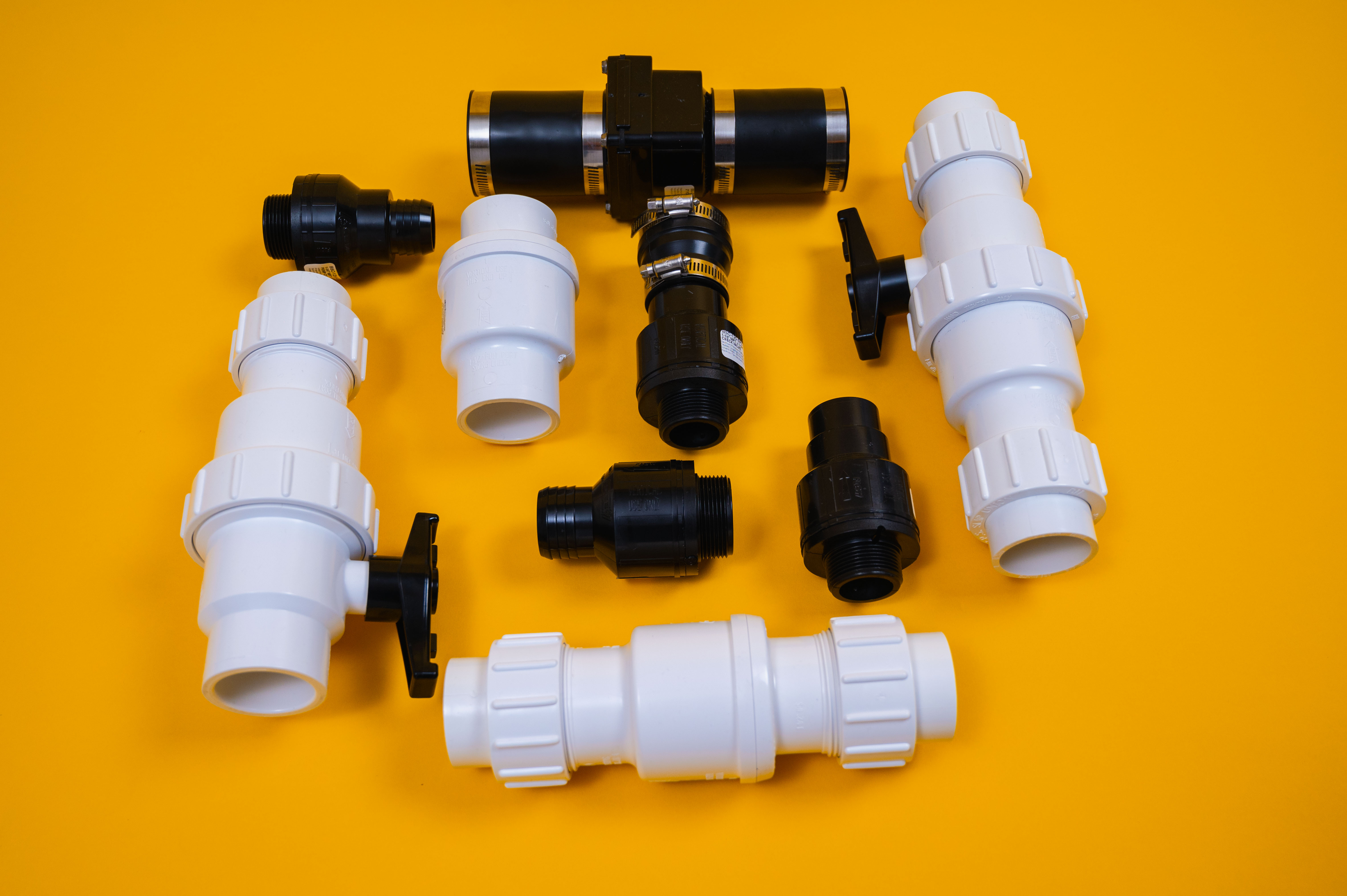When dealing with Sump and Sewage applications, check valves are definitely something you will hear about. There are several benefits to having a check valve installed in these systems, even though it is not always required by code.
There are a number of different types of swing check valves available on the market. Standard sump pump check valves (as seen in the image to the left) can also be referred to as a Swing Check's as this is highlighting the motion of the flapper type poppet that is inside the valve. There is a flapper that swings open when the pump is on, allowing flow in one direction. The flapper closes when the pump stops, to prevent reverse flow.
Swing check valves can be purchased with a shut off valve built in as a single unit. Combination valves are becoming more popular in Sump and Sewage applications due to the benefits of servicing the system.

What is a Ball/Swing Combination Check Valve & How Does it Differ?

A Ball/swing combination check valve is a combination of a PVC Ball Valve and a Swing Check Valve. In the past, you would have had to install two separate valves. With this product, you only need to install one compact valve to get the benefits of both.
By combining these two types you will:
- Save install time
- Save labor
- Save space
- Save money (1 valve to do 2 jobs)
 With the additional feature of a built-in ball valve, you are now able to prevent back flow from the discharge piping when servicing or replacing the pump. This is especially important when dealing with effluent sewage applications. When service is required, having a shut off valve installed prevents the sewage in the upstream discharge line from flowing back when the check valve or pump needs serviced.
With the additional feature of a built-in ball valve, you are now able to prevent back flow from the discharge piping when servicing or replacing the pump. This is especially important when dealing with effluent sewage applications. When service is required, having a shut off valve installed prevents the sewage in the upstream discharge line from flowing back when the check valve or pump needs serviced.
One of the main differences between a Ball/Swing Combination and a regular Check Valve is the addition of the Ball Valve in a single product. In the next section, we will highlight when you would use these different products and why.
Important to note: It is important not to confuse this valve with a ball type check valve which uses a round ball instead of a flapper to stop the reverse flow of fluid. The combination ball/swing check combination valve is "swing" type check.
When to Use Which Check Valve
Simply put, you could use a combination ball/swing check valve in any situation in which you would use a swing check valve. If you are working on a sewage system, it is more important that you have one of these installed.
If you are just needing to put a check valve in a basic sump pump system, the standard swing check will work fine and accomplish what you need. If your sump pump system runs often, or you perceive that it may need more regular servicing, it may make more sense to put in a ball/swing combination. This will save you time and make servicing much easier.
These valves can be installed either vertical or horizontal when pumping out solid free liquids. When you are pumping solid or semi-solid liquids, these valves need to be installed horizontal (up to a 45° angle is acceptable). Proper installation is imperative for this to work properly.
Check out the following articles from Knowledge Base or BoshartU for more information!
Standard vs Quiet Sump Pump Check Valve
How do I Select a Check Valve for my Sump Pump Application?
How do I Select a Check Valve for my Effluent or Sewage Pump Application?
Have further questions about this subject?
Head over to Boshart's Knowledge Base: technical product information, guidelines, and more.






SHARE